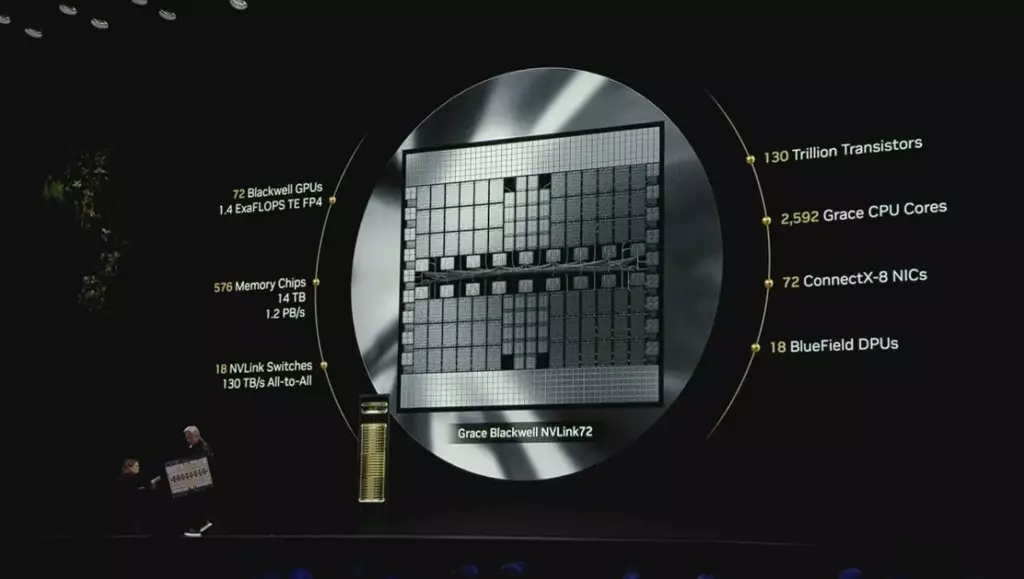Recent developments in U.S. trade policy have showcased the ever-complicated relationship between tariffs and the electronics industry. President Donald Trump’s decision to back off from imposing tariffs on electronics and semiconductor imports marks a significant shift that reflects broader economic pressures and the realities of global supply chains. This pivot not only suggests a response to the financial instability gripping the stock market—down 15% since Trump assumed office—but also hints at a reconsideration of the administration’s long-term economic strategy.
The new exemptions for consumer electronics manufactured primarily in China come amidst fierce lobbying efforts from tech industry giants who could have faced catastrophic price increases otherwise. The Consumer Technology Association warned that these tariffs could further inflate costs for crucial products like smartphones and gaming consoles, with potential price hikes amounting to 40% for consoles and almost 50% for laptops. Such increases would certainly alienate consumers already reeling from inflation while also jeopardizing the very sector Trump has pledged to revitalize.
The Semiconductor Scenario
With semiconductors at the heart of modern electronics, it is puzzling that the administration considered tariffs on these essential components in the first place. Chips are foundational to everything—from smartphones to smart appliances—and any disruption in their supply chain would have reverberating effects on not just prices, but also on innovation timelines for companies like Apple, the crown jewel of the tech sector. Decades of U.S. market share erosion in semiconductor manufacturing have created a reality in which companies are increasingly reliant on foreign production capabilities, particularly from Taiwan’s TSMC.
Scott Almassy from PwC asserts that simply imposing tariffs will not facilitate a genuine resurgence in U.S. chip manufacturing. The complexities involved—ranging from raw material acquisition to sophisticated manufacturing processes—mean that recapturing market share and rebuilding the industry is a gradual endeavor. Chip-making requires vast investments that cannot be simply turned on with tariffs; it necessitates systemic, long-term planning and infrastructure development.
The Reality of Market Share and Education
One must also consider the educational base that supports such industries. The United States, while still a global leader in tech innovation, is falling behind in producing the necessary skilled workforce. Countries like China are churning out engineers faster than the U.S. can educate and train them. As America strives to cement its role in technology manufacturing, it must also focus on education reform to ensure that its workforce can meet the needs of these evolving industries.
The Trump administration’s push for onshoring manufacturing holds potential value, yet it remains hindered by the reality of a time lag and the scale of investment required. Initiatives like the bipartisan U.S. Chips and Science Act are commendable, but experts warn that the tens of billions earmarked may still fall short in terms of making a substantial impact on domestic semiconductor production in the next decade.
The Influence of Lobbying: A Double-Edged Sword
There is an undeniable tension in the relationship between political policymaking and industry lobbying. The tech sector’s lobbying powers are strong, and it has shown capacity to sway major decisions quickly. Some may criticize this influence as detrimental to local interests; others would argue that the tech industry is vital for both job creation and international competitiveness. High-value jobs that require specialized skillsets are at stake, and the demand for education in STEM fields must be prioritized to maintain a sustainable workforce.
Despite skepticism surrounding technology companies’ motivations, the reality is that they are crucial for advanced job creation. As firms like Apple and Nvidia invest billions into U.S. manufacturing, the effort to entice talent back to America sets an essential precedent. The current regime’s tactic of leveraging tariffs to stimulate domestic production could be a start, but it unclear whether it will lead to sustainable growth or merely serve as a temporary fix.
The Future: A Delicate Balance
As the dust settles from this recent tariff decision, two narratives persist: one advocating for continued protectionist measures aimed at fostering domestic production, and another pushing for more open trade that may allow the U.S. to benefit from competitive pricing and technological advancement. The reality remains that navigating this trade tug-of-war isn’t simply about tariffs; it intertwines with the complexity of supply chains, labor education, and the unpredictable currents of global economics. Future policies must find a way to strike a harmonious balance if America is to reclaim its leading role in technology and innovation while mitigating market fluctuations and fostering consumer trust.

